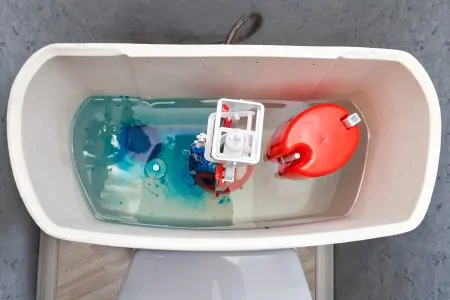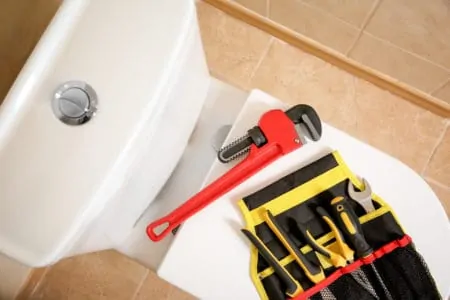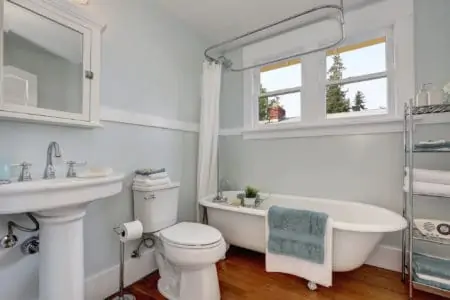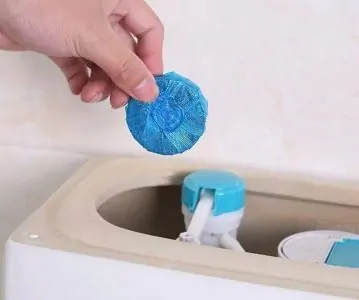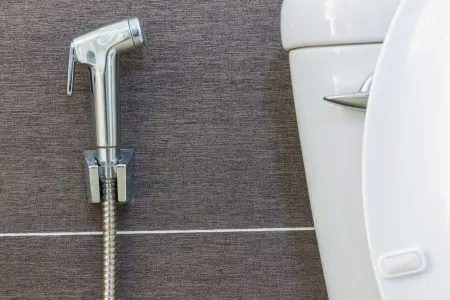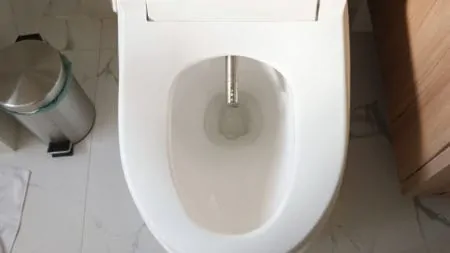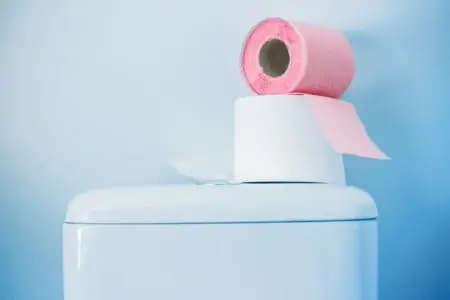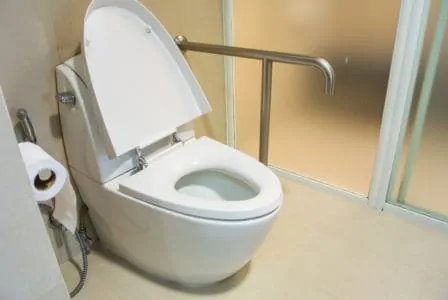A toilet flapper is a small round object at the bottom of the water tank that opens when you flush, then closes again to refill the cistern. Flappers will slowly degrade, eventually allowing water to leak through. If your toilet makes noise long after you flush it, a worn-out flapper is the most common culprit.
To prevent your toilet from leaking, you will need to replace your flapper with a new one. This is a relatively straightforward job, and the most challenging part might be choosing a flapper from the numerous products that are available.
We have reviewed five of the best toilet flappers that are currently available, to help you find the right model for your toilet. We chose these flappers based on their size, material, and how quickly they will open and close during use.
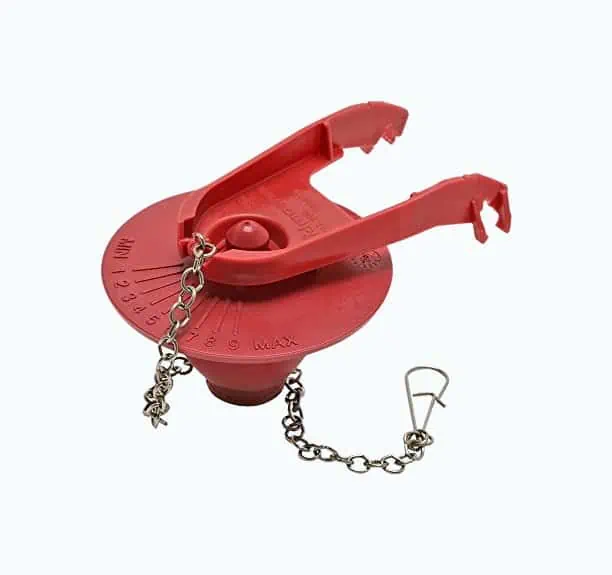
- Nine flush settings
- Microban technology
- 5-year warranty
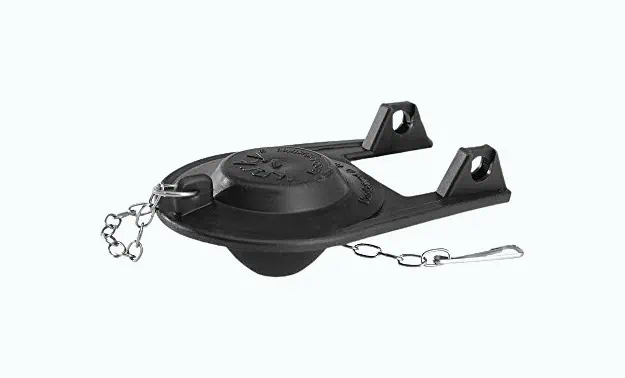
- Stainless steel chain
- For 2-inch valves
- 100% rubber flapper
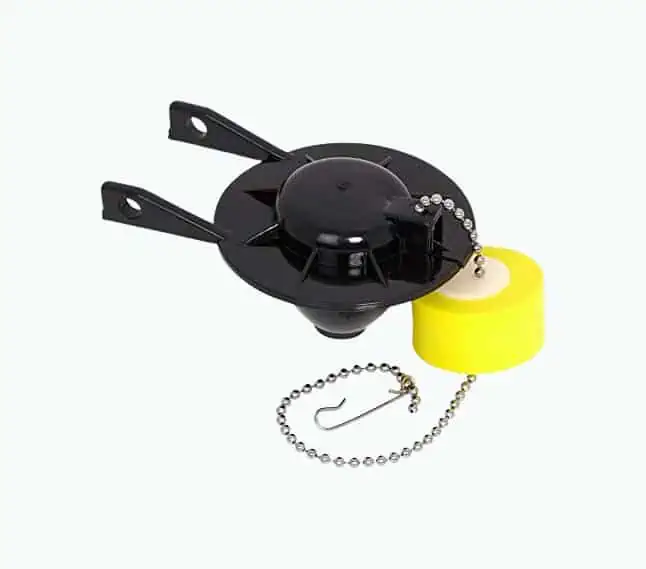
- Adjustable closing speed
- Flexible rubber ball
- Efficient seal
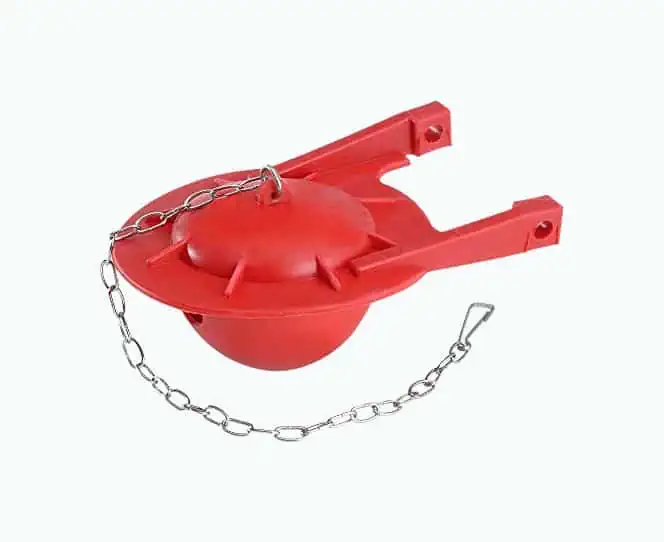
- Fits any standard 3-inch valve
- Resistant to chlorine and hard water
- Sturdy stainless steel chain
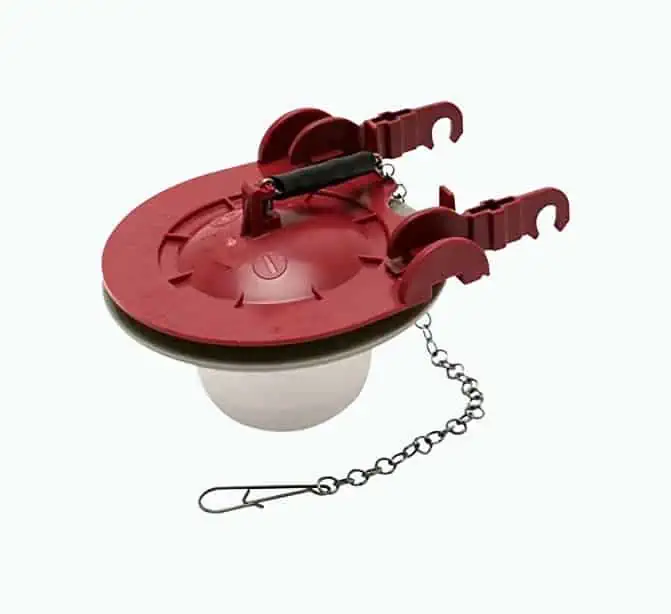
- 10-year warranty
- Adjustable closing time
- Solid plastic frame
Review Methodology: At Sensible Digs, we are committed to providing you with thorough and detailed assessments of the best toilet flappers. Our experienced professionals conduct hands-on tests and evaluations, using strict criteria and benchmarks, to measure and compare the performance of each product. We rank the flappers based on key factors such as durability, ease of installation, water-saving features, and compatibility with various toilet models. Our analysis provides evidence of what sets some toilet flappers apart from their competitors. Our reviews also detail design choices and their impact on users, and our findings are backed by quantitative data and firsthand experience. We aim to guide you in making informed decisions when purchasing a toilet flapper that best meets your needs.
The Best Toilet Flappers of 2024
Flappers are available in various shapes, sizes, and materials, and with different closing speeds, which can make it challenging to find your ideal model. To help you, we have reviewed five of the best toilet flappers currently on the market. We focused on rubber flappers as they are the most popular type.
Fluidmaster Universal PerforMAX Longest Lasting
Best Adjustable Toilet Flapper
This modern Fluidmaster flapper is designed to fit 2-inch flush valves or toilets with flushes of 1.28 to 3.5 GPF. The robust frame keeps the flapper from bending too much and being damaged, so this is a durable option.
The flapper is made entirely using Microban technology, which fights bacteria and germs. This high-quality product is also versatile. You can adjust how much water leaves the toilet’s water tank before the valve closes.
You can turn the dial counter-clockwise for a longer flush, or clockwise for a faster close and water-saving flush. There are nine settings to choose from. For added peace of mind, Fluidmaster covers this product with a 5-year warranty.
Pros
- Nine flush settings
- Microban technology
- 5-year warranty
- Solid frame
Cons
- Only fits 2-inch valves
- Some users found the flow rate difficult to adjust
Product Specs
| Type of flapper | Adjustable rubber flapper |
| Valve dimensions | 2 inches |
| Warranty | 5 years |
| Material | Rubber |
| Dimensions | 6 x 6 x 3 inches |
Our Ratings
User Experience
Korky 54BP Toilet Tank Flapper
Most Economical Toilet Flapper
Often, the less complicated a product is, the more reliable it is. If you want to keep things simple and budget-friendly, this Korky toilet tank flapper is an excellent option.
It has two arms that attach to the overflow pipe, and a small ball that fits the valve opening. The included chain attaches to open and close the flapper when you flush the toilet. This is a very user-friendly product.
It is suitable for all 2-inch valves and is made of 100% flexible rubber to achieve a watertight seal. The chain is made of stainless steel to help it withstand rust and corrosion, meaning this economical model is also long-lasting.
Regarding installation, most users were able to complete it in 60 to 120 seconds. You should be able to enjoy the benefits of your new toilet flapper very quickly.
Pros
- Stainless steel chain
- Fast installation
- Entirely rubber flapper
Cons
- Might need to shorten the chain to make it work properly
Product Specs
| Type of flapper | Non-adjustable rubber flapper |
| Valve dimensions | 2 inches |
| Warranty | 1 year |
| Material | Flexible rubber, stainless steel chain. |
| Dimensions | 1.5 x 4.2 x 7.5 inches |
Our Ratings
Personal Perspective
American Standard Universal Flapper with Float
Best Toilet Flapper with Float
This flapper should be suitable for any 2-inch valve. It includes a chain and a rounded float that allows you to customize the closing speed. Small plastic clips are built into the inner end of the float, so its height can be easily adjusted.
For a shorter flush, you can place the floater higher up the chain, closer to the lever’s arm. In contrast, if you want a longer flush, you can move it down toward the valve.
The flapper itself is black and has a solid frame and a flexible rubber ball. Reviewers praise the manufacturing quality and effectiveness of this product. Although it comes at a higher price point than some of its rivals, its longevity makes it a worthwhile investment.
Pros
- Adjustable closing speed via float
- Long-lasting
- Effective seal
Cons
- May require trial and error to achieve your ideal flush duration
Product Specs
| Type of flapper | Non-adjustable rubber flapper |
| Valve dimensions | 2 inches |
| Warranty | Not indicated |
| Material | Plastic and rubber |
| Dimensions | 4.8 x 4.8 x 4.8 inches |
Our Ratings
Community Feedback
Korky Toto Toilet Repairs-Large 3-Inch Flapper
Most Popular Toilet Flapper
This 3-inch Korky flapper is designed to fit most toilets made by Toto, hence its name. However, it should fit any standard 3-inch toilet valve. This is one of the most popular toilet flappers currently available.
If you want a user-friendly, effective flapper, this model provides the best of both worlds. It doesn’t offer as many adjustment options as some of its competitors, which makes it more straightforward to install and use.
Although the flexible material is slightly less durable than a solid frame, it makes installation easier. Some users were able to install it in a matter of seconds. That isn’t to say this flapper is low quality, as it still has a lot going for it.
It is designed and manufactured in the United States using high-quality rubber, so it is resistant to chlorine and bacteria, as well as hard water and water from wells. Its stainless steel chain should withstand rust and corrosion.
Pros
- Easy to set up and use
- Resistant to chlorine and hard water
- Sturdy stainless steel chain
Cons
- The flexible body could twist, damaging it over time
Product Specs
| Type of flapper | Non-adjustable rubber flapper |
| Valve dimensions | 3 inches |
| Warranty | 5 years |
| Material | Chlorazone rubber, stainless steel chain. |
| Dimensions | 5 x 4 x 2 inches |
Our Ratings
First-Hand Impression
Fluidmaster 3-Inch Universal Water Saving
Most Durable Toilet Flapper
This 3-inch Fluidmaster water-saving toilet flapper looks very different from most of its rivals. The top has been molded using solid plastic, providing a sturdy frame. Its seal is made of silicone to ensure a reliable, leak-free seal when the flapper is closed.
The chain is partially padded. This black pad prevents the chain from bending or twisting for smoother operation and increased longevity. The manufacturer has so much confidence in this product’s durability that it provides a 10-year warranty.
The flapper has an adjustable dial that regulates the amount of water drained per flush. You simply rotate the inner red circle to your desired level. If you are unsure which setting to use, there are recommendations based on your toilet on the back of the packaging.
This unit is designed to match 3-inch valves and is best suited for toilets built after 1994. It will fit both 1.28 and 1.6 GPF toilets.
Pros
- 10-year warranty
- Adjustable closing time
- Solid frame
- Chain protector
Cons
- The ball might be larger than expected. Measure your flush valve carefully
Take Note
Product Specs
| Type of flapper | Adjustable rubber flapper |
| Valve dimensions | 3 inches |
| Warranty | 10 years |
| Material | Stainless steel chain, silicone seal, rubber. |
| Dimensions | 9 x 4 x 3 inches |
Our Ratings
User Experience
| Product | Best | Type of flapper | Valve dimensions | Warranty | Material | Dimensions |
|---|---|---|---|---|---|---|
| Fluidmaster Universal PerforMAX | Adjustable | Adjustable | 2″ | 5 years | Rubber | 6 x 6 x 3″ |
| Korky 54BP Toilet Tank Flapper | Economical | Non-adjustable | 2″ | 1 year | Flexible rubber, stainless steel chain. | 1.5 x 4.2 x 7.5″ |
| American Standard Flapper | Float | Non-adjustable | 2″ | N/A | Plastic and rubber | 4.8 x 4.8 x 4.8″ |
| Korky Toto Toilet Repairs Flapper | Popular | Non-adjustable | 3″ | 5 years | Chlorazone rubber, stainless steel chain. | 5 x 4 x 2″ |
| Fluidmaster Universal Water Saving | Durable | Adjustable | 3″ | 10 years | Stainless steel chain, silicone seal, rubber. | 9 x 4 x 3″ |
How a Toilet Flapper Works
Before you can find the best toilet flapper for your home, it will be helpful to familiarize yourself with what a flapper is and the role it plays in your toilet working properly.
Its Role
Although there are various types of flappers, they all serve the same function. They open to release the water when you flush a toilet, then reseal the tank to allow it to refill ready for the next flush. As such, flappers are a vital component in determining how much water is released during each flush.
They also prevent water from leaking into the toilet bowl when not in use, so it doesn’t waste water unnecessarily. Your choice of flapper will play a significant role in how your toilet flushes, so it is important to consider it carefully.
Flapper Installation
You should be able to find your flapper quite easily. Remove the lid from your toilet’s water tank and look inside. The flapper is a small circular object just above the flush valve seat at the bottom of the overflow tube.
Flappers are available in various shapes and configurations, but most have two contact points. On one side, it connects to the lever arm, and the other connects to the overflow tube.
If you look closely at a flapper, you should see two tiny arms with a hole at the end of each. The bottom of the overflow tube has two matching hooks on each side. The flapper’s arms wrap around the hooks to hold it in place.
On the other side, a flapper typically features an attachment. This attachment is usually referred to as a “lever-link” and is generally either a PVC fastener or a metal chain. This connects the flapper to the lever arm.
How It Works
When you activate your toilet’s flush, the lever arm lifts, opening the flapper and uncovering the valve. The water quickly drains from the tank and into the bowl to remove any waste. The flapper closes, and the cistern refills with water. The weight of the water presses the flapper down and seals the valve until the toilet is flushed again.
Types of Toilet Flappers
You will have numerous toilet flappers to choose from but they usually fall into three broad categories:
Rubber Flappers
The majority of modern toilets use rubber flappers. They resemble an upside-down hat and are placed over the valve’s opening. They are usually made of sturdy rubber, which provides excellent durability.
Basic models feature a single hole located at their base, to allow water inside. When the tank is emptied and refilled, more water enters the hat and increases its weight. Once the reservoir is heavy enough, the flapper drops and closes the valve.
Some flappers are adjustable. By restricting or increasing the water flow into the device, it will close more quickly or slowly.
Pros
- Long-lasting material
- Adjustable models are available
- Available in various sizes to fit all toilets
Cons
- The lever link needs to be adjusted for the flapper to work correctly
Seat Disk Flapper
The seat disk is the oldest flapper type that is still in use. It is a rounded disk that fits and snaps above the valve. The lever system lifts it when the toilet is flushed and drops it back into place to refill the tank after use.
Although the seat disk itself isn’t huge, the lever system includes several components, making the device bulky. This can occupy a lot of space in your toilet’s water tank.
Pros
- Fits older toilets with the appropriate setup
- Easy to replace
- Made of one piece of sturdy rubber
Cons
- Occupies a lot of space in the tank
Tank Ball Flapper
Not to be confused with the float-ball, tank ball flappers aren’t widespread and are designed to fit specific toilets. Although various ball types are available, they usually feature a large rubber ball.
It is attached to the lever arm via sturdy metallic rods that screw into the top of the tank ball. If this sounds like your toilet configuration, you should probably be looking for a tank ball flapper.
Pros
- No chain is required
- The ball is typically made of sturdy rubber
- Available in various sizes
Cons
- Only fits specific toilets
Choosing the Right Toilet Flapper
For a toilet flapper to function properly, it needs to seal your tank to prevent leaks and release water quickly when you flush. You should keep the following in mind to help you find the best flapper for your toilet:
When Is It Time to Replace Your Toilet Flapper?
There are some telltale signs that it might be time for a new toilet flapper.
Water Leaks Into the Bowl
If you can hear the sound of water trickling inside your toilet, particularly for a long time after flushing, the flapper probably isn’t sealing the valve properly. There are numerous possible causes: mold, mildew, bacteria, and bleach in the water can degrade the material and cause it to crack (1).
The seal can also become loose due to natural wear and tear, reducing its effectiveness.
Broken Lever-Link
The lever link that connects the flapper to the lever arm is a common cause of flapper failure. This applies whether it is made of rubber or metal.
If this happens, the entire flushing system will be compromised. The lever arm won’t be able to pull the flapper and the handle will become loose, so it will be impossible to flush properly.
Some models allow you to replace the lever link specifically. However, replacing the chain is often as expensive as buying an entire flapper. As such, most users opt to replace the whole device instead.
Flapper Arms Break
The wear and tear of moving the flapper up and down every time you flush can eventually weaken and break the arms holding it in place. If the device isn’t attached to the overflow tube correctly, it won’t be able to open and close properly. This will often lead to leaks and an improper flush.
Other Reasons
As a general rule, a flapper should be replaced every three to five years. If you are unsure whether or not it is time for a new one, try the following test:
- Add food coloring: Pour a few drops of food coloring into your toilet’s water tank.
- Wait: Wait for 20 minutes without flushing the toilet.
- Inspect the bowl: If you notice the water in the toilet changing color, or streaks of color down the sides, your flapper is allowing water through and needs to be replaced.
How to Install a Toilet Flapper
As the rubber flapper is the most common type, we will take a quick look at how to install one. This is a general guide and you should always refer to the instructions for your specific flapper.
- Turn off: Shut off the water valve connecting your toilet to your plumbing system.
- Empty the water tank: Flush your toilet a few times until the valve is emptied.
- Remove the old flapper: This process should be straightforward. You need to disconnect the old lever link and unlatch the side hooks on the lower end of the overflow tube.
- Secure the new flapper: Lock the device’s arms onto the same hooks. Position the body so it is over the valve.
- Attach the new lever link: Connect the lever link from the flapper to the lever’s arm. Ensure it is secured with the lever link slightly loose. If necessary, you can shorten the lever link but be careful not to take too much off.
- Test your new flapper: With your water tank still empty, flush the toilet a few times. This will let you see whether the flapper opens and closes properly.
- Open the water valve: Open your toilet’s water supply and its water tank should fill up automatically.
- Flush the toilet: Once the tank is full, flush the toilet a few times with the lid open. You will be able to see if everything is working properly.
- Replace the lid: With the lid back in place, your toilet should be working properly again.
